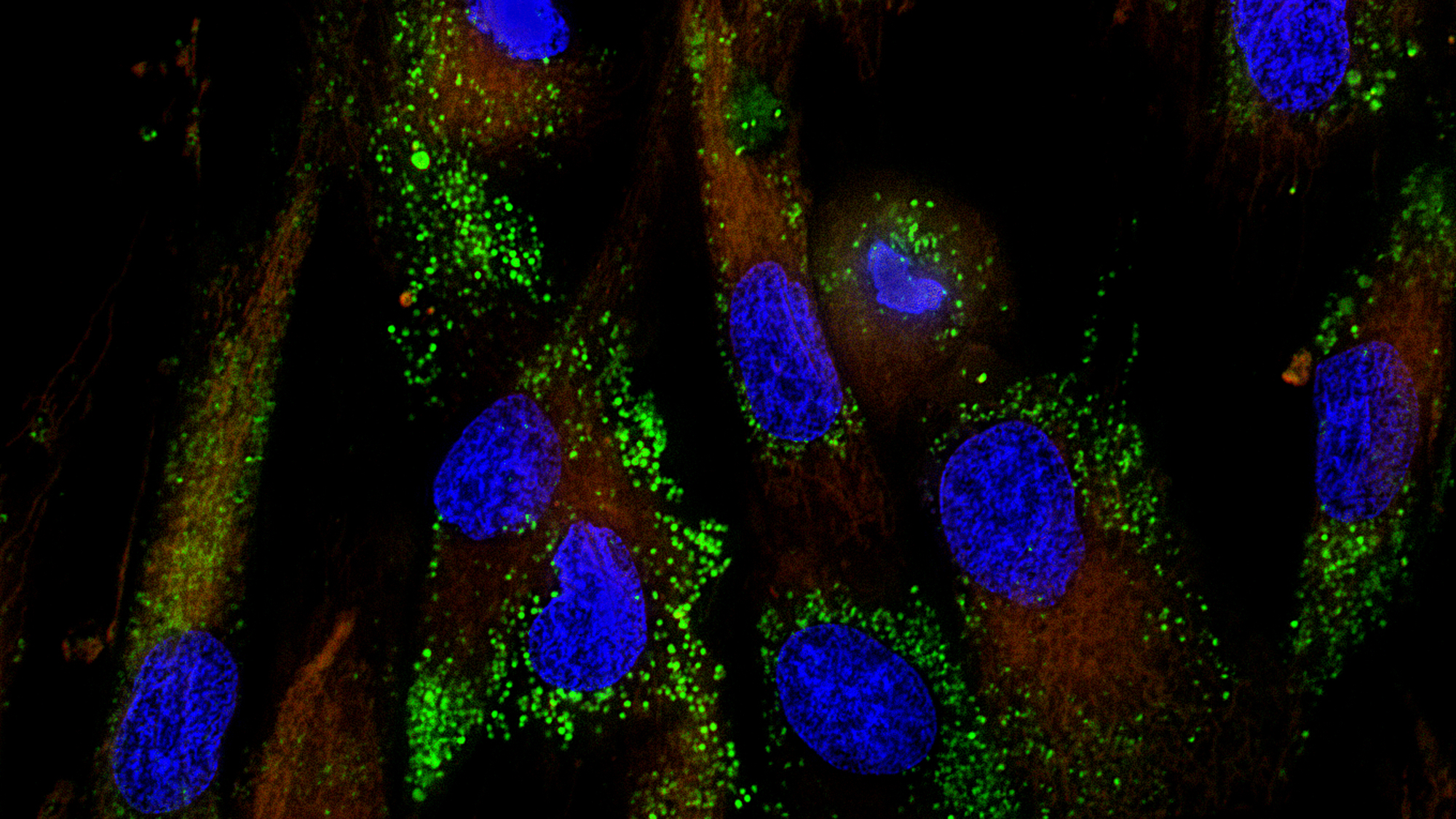

We may earn revenue from the products available on this page and participate in affiliate programs. Learn more ›
Fluorescence microscopes used to examine samples labeled by fluorescent stains or proteins are an invaluable resource across a variety of laboratories. Unfortunately, a decent one could set you back thousands of dollars, meaning the tools usually stay within well-funded research environments and academic settings. But a team from Minnesota’s Winona State University recently demonstrated that not only can you assemble a decent substitute using the average smartphone or tablet—it will only set you back between $30 and $50.
As detailed today via a proof-of-principle paper published in Scientific Reports, researchers have unveiled their “glowscope,” a small plexiglass and plywood frame clip-on attachment for phones and tablets. The tool utilizes a recreational LED flashlight alongside the device camera’s theater stage lighting filters to ostensibly build a fluorescence microscope accessory. In tests, specimens were illuminated using the LED light while a filter placed over the camera lens omitted certain light wavelengths to enable fluorescent light visualization.
[Related: How to build a solar microscope.]
In their demonstrations, the paper’s authors used their DIY glowscope to provide roughly five-fold magnification on live zebrafish embryos measuring just two-to-three millimeters long. With the embryos’ fluorescent protein expressions, they were able to observe zebrafish spinal cords, hindbrains, and cardiac tissue. From there, researchers were able to measure their subjects’ heart rates, and even the movements of individual heart chambers once they enhanced video clarity through preexisting free software.

Because of their easy assembly and low costs, researchers believe the glowscope could become an extremely useful asset to K-12 schools otherwise lacking the funds for high-tech science tools. Not only that, but the team argues laboratories could even assemble their own glowscopes to complement their existing fluorescence microscopy equipment, thus saving them money, as well.
[Related: Scientists made the highest-ever resolution microscope.]
“Providing students with opportunities to make their own observations, form models and predictions, acquire and interpret data, and use this to revise their models and understanding are common takeaways from life science education studies,” the team wrote in their paper. “Use of devices such as glowscopes… can support these goals of allowing students to learn about science by doing science. In this way, students will build their own understanding of concepts rather than try to absorb information delivered in lecture format.”
You don’t need to go back to junior high school or visit a well-funded laboratory to see a glowscope in action, either. The team even made all their instructions and materials available for readers to assemble their fluorescence microscope filters in the comfort of their own homes—zebrafish not included.
